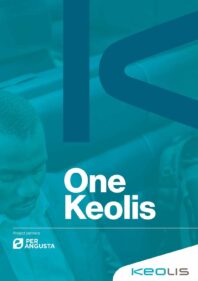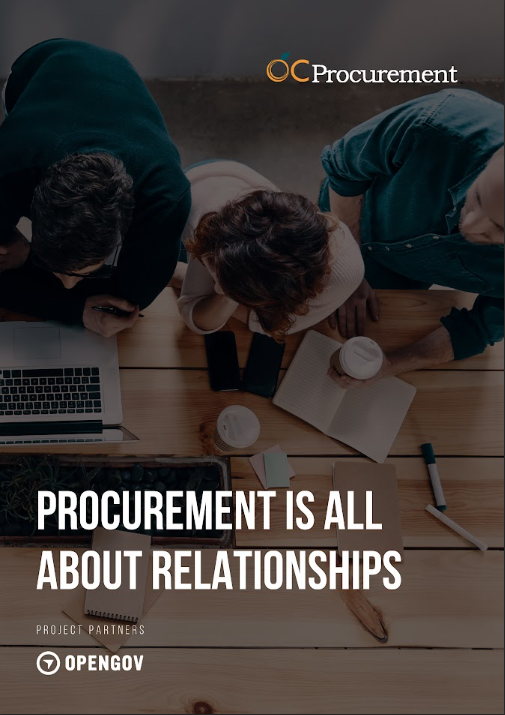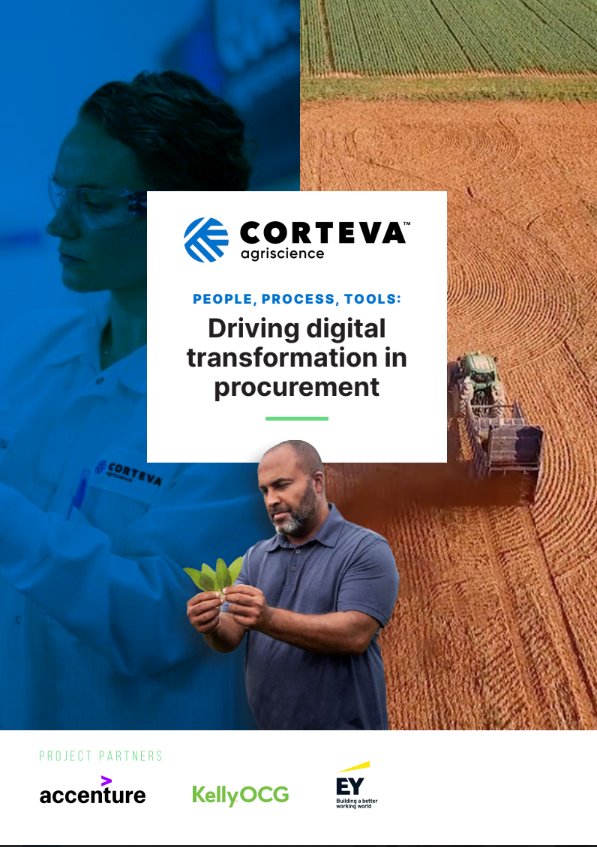You’ve heard it before. A procurement transformation journey is underway as an organisation has come to realise that procurement is well and truly a key cog in its operations, if not the key cog. Procurement isn’t simply cost savings or filing through the data and identifying some capital that could be clawed back to better serve the bottom line. Make no mistake, this is a core element of procurement, but there’s a lot more to it than that. A company has to simply let procurement capitalise on one of its biggest strengths: opportunity.
Take Keolis for example. As one of the world’s leading public transport operators, Keolis has operations the world over from the UK and Sweden, to Australia, USA, Luxembourg, and China. It goes without saying that a company of this size and scale has tremendous opportunity in its procurement functions, the question is whether it realises this?
In Keolis North America, CPO Abraham Saxionis is the man in charge of all procurement operations. More specifically, he’s spearheading a significant reengineering of procurement for a company which, while smaller in size than its parent group, is experiencing tremendous growth.
“Just over a year ago now, I was given the job to reengineer our procurement process, to transform it to become more profit-oriented for Keolis, and to consolidate our volume and rationalize the supplier base, which has grown excessively high,” he explains. “We have over 3,500 suppliers we do business with and as we progress, we want to establish more strategic relationships with outside companies, ones that we can consolidate more of our volume with and consider long-term improvements in what we provide to our end customer.”
Simple enough on paper, but as any procurement professional will profess, there are many steps to take even before one begins a journey like this. Most notably, gaining the trust and the so-called ‘operational buy-in’ from the executive board. Thankfully, Saxionis can boast of being blessed with an executive team well and truly behind this journey before he even set foot in the business. This alone clears some of the initial hurdles that can often slow down progress.
“I enjoy the sponsorship not just of the North American CFO, but also of our CEO of North America, and the CEOs of the different divisions, who all realize the power of procurement,” he beams. And why wouldn’t they? As we speak in early 2021, Saxionis can already point to significant successes that he has been able to unlock together with his procurement team.
“Truth be told, in the past, the company hadn’t been tracking and reporting procurement savings or even the impact of procurement on profitability,” he continues. “Through the initiatives we have undertaken, we have been able to save millions of dollars in this one-year period. We can demonstrate this right down to the nearest dollar and cent, and our intent is to continue to do that as we move forward.”
“Through the initiatives we have undertaken, we have been able to save millions of dollars in this one-year period. We can demonstrate this right down to the nearest dollar and cent…”
Saxionis, a seasoned procurement professional with a wealth of experience working with IBM, EY, Bose, and Fidelity Investments, knows all too well of the growing significance of procurement. As a procurement professional, he’s known it all along and his experience coupled with an intense enthusiasm for procurement means he is well and truly the right man for the job at Keolis North America. Not that there was any doubt. “I realized a long time ago that there is a humongous opportunity for any company when you’re looking at something that has the effect of directly increasing profitability. Clearly, you want to do more,” he says. “As I have worked in over a dozen companies throughout the years, personally, I have found that procurement was always the last place companies look to reduce cost when there is a need to improve profitability. It should absolutely be the first area they try to reengineer or improve, but it’s typically an afterthought. Because while this is happening, suppliers are enjoying the freedom of increasing prices and making a profit that’s typically much higher than what we were doing at the time.” This is where the company follows the One Keolis principle. Keolis looks to no longer be defined by Division A, Division B, or Division C; rather, it is one company that integrates all its resources, not just technologies, but also its people.
Keolis by its very definition is a low-margin business which enters into very competitive contracts and agreements to serve local governments and municipalities, so the company must always be looking to find ways to continue to improve profitability in order to make those contracts sustainable over the long term. The key to doing this speaks to a broader procurement conversation that’s happening the world over; the consolidation of, access to and analysis of data from both the external suppliers but also from internal processes.
“It’s no secret that technology has had a significant impact on how we do things. Where we were manually intensive in the past, we now have opportunities to leverage technology to automate all those processes. We have the ability to identify the opportunities for further improvements with significant impact to the bottom line through automation of manual processes. Procurement is the prime game for that because of the number of transactions that we support on a monthly basis,” he says.
“We’re able to showcase that if we do a good job dealing with suppliers, while also gaining an understanding of the internal processes of the company, bring ideas to the suppliers, and partner with them to improve our own internal processes, this will have a significant impact on the efficiencies and effectiveness of internal operations.”
An example Saxionis points to is perhaps one that will strike a chord with many procurement professionals. More often than not, individual commodities Keolis purchases from individual suppliers or manufacturers may end up being billed individually. “We definitely don’t want them to be billing us by location,” he laughs. “So, one of our main objectives is to bring efficiencies to the company through vendor consolidation as well as invoice consolidation and summarization of what we do, including POs and all that kind of stuff, through data analysis.”
Saxionis and his teams had to collect all the data that would enable them to perform the analysis and identify opportunities that represent the biggest return for the business so that procurement could also prioritize its efforts. In his experience, Saxionis has seen far too many people “put their jogging shoes on and run in the wrong, or even opposite, direction of where the end line is”.
“For us, it was important from the beginning to know which direction to run once we put our sneakers on,” he says. “To assist in change management, we had an external consultant perform an assessment of the different divisions, which yielded insights that we used as the springboard to launch a handful of initiatives that were fairly simple to target and undertake, helping us score some early successes.”
“We don’t just want to do business with the largest suppliers for the benefit of saving a dollar. We’re very community-oriented and so we award contracts to smaller businesses that are minority-owned”
These initiatives were created in line with the overarching strategy of fostering collaboration among the divisions to get everybody to look at the same data together and determine what the most efficient way would be to improve the cost structure. This approach allowed Saxionis to prevent the aforementioned individual bills per category per supplier per division. Having the data and the collaboration meant that procurement could serve as a counterweight in the middle of the whole negotiation to make sure the cost picture remains balanced.
“We want our suppliers to be profitable, by the way,” he interjects. “We never want our suppliers to become financially stressed through working with us. We want suppliers that are healthy and can support us in our journey for years to come. But at the same time, we don’t roll over and take the first price offered to us without consideration. We have that understanding early on with our suppliers. We want a balanced relationship, a fair handshake, and to be able to both come out winners of the partnerships we form. So long as you have the data and you lay out the facts, there isn’t much subjectivity that goes into the decisions at that point.”
So it’s clear, and of no surprise to anyone, that data-driven analysis is critical. Fact-based analysis is what creates success in procurement. Keolis, a relative newcomer to North America, was in a position where its procurement systems were not integrated. With an operating model built around being awarded transportation contracts run by either governments or other private companies, streamlining the work under these contracts is critical to Keolis’ success. It’s a strategic advantage for Keolis to bring in companies that help it make a profit at the end to support its stakeholders. Through this, Keolis also inherits technology, which is then integrated into its own ecosystem. “The processes, the basic systems and capabilities are not there for us to get the data. So, we work to understand how we can get the data and how we can integrate them into our reporting and analysis structure,” says Saxionis. “And that’s where the journey was born as we realized we cannot continue on this path without a technology solution that would make all of that easier, more seamless, and more transparent for us, while improving controls.”
And thus, toward the end of 2020, Keolis began the process of selecting and implementing a new ERP solution across the entire footprint. Upon completion, Keolis will have better data gathering capabilities presented in real time. This implementation is geared toward bringing consistency and integration across the footprint to support not only procurement, but the entire business. This is where Keolis works closely with Per Angusta, a SaaS Procurement Performance Management Software. Designed so that Keolis can gain a clearer picture as to the savings, budget plans, targets, and forecasts, Saxionis describes Per Angusta as “a great tool in our toolbox”.
“It brought a lot of discipline in our environment because it serves as the certified source of information for savings we are generating,” he says. “We have closed the loop between procurement and finance, where in the past, a lot of things would fall through the cracks. It’s both a method to capture initiatives, but it’s also a communicator tool in that it allows us to integrate the fruits of our labor and make them visible into the reporting of the business.”
As highlighted throughout, there is a desire through procurement to improve the financial and operational performance of Keolis, and while it’s clear that Saxionis subscribes to the school of thought that it’s not just about surviving and making sure the P&L is growing, he also understands the societal responsibility that rests upon Keolis’ shoulders. This feeds directly into the procurement reengineering journey.
Keolis operates with a “Think Like a Passenger” motto. A passenger is very conscious of safety, that’s undeniable, and Saxionis does highlight how the suppliers it works with must align with Keolis’ commitments to safety. The modern-day passenger is also very conscious of the world around them and what businesses like Keolis do to make the world a better place.
“It gets to a point where, in order to continue to expand and to be able to take advantage of the value that the company brings to the table when dealing with customers or suppliers, we need to be more united. That’s the concept behind One Keolis”
“Keolis is very focused on its impact and is sensitive to its impact on the environment. Our discussions and our logic in dealing with suppliers is ensuring we do the right thing for the environment,” he says. “We’re working with suppliers to ask them to believe in and contribute to the same causes we do. For example, if we take out trees and vegetation in doing something, we work with suppliers to see if they could actually plant a tree and help in that aspect of the business.”
Elsewhere, Keolis works closely with disadvantaged business enterprises (DBEs), smaller minority- and women-led companies, to support their growth. This is not simply hearsay, as Saxionis certifies: “We don’t just want to do business with the largest suppliers for the benefit of saving a dollar. We’re very community-oriented and so we award contracts to smaller businesses that are minority- and women-owned. That’s another aspect that’s also important to procurement. We have to take certain steps to meet our objectives in that area.”
So Keolis is reengineering its procurement processes, implementing a new ERP system to gain a better understanding of both its internal processes and that of its suppliers, and indeed consolidating those suppliers to unlock great efficiency and opportunity. This is all well and good, but what about the people behind the scenes? A new process or technology is nothing if it isn’t powered by people with the right skillset and know-how to leverage these changes.
“We are in the process of forming a shared services organization for procurement, and for other areas in the organization,” says Saxionis. “As a company starts out and we begin to grow organically, we all are working more like independent businesses. It gets to a point where, in order to continue to expand and take advantage of the value the company brings to the table when dealing with customers or suppliers, we need to be more united. That’s the concept behind One Keolis.”
Keolis is looking to establish a center of excellence and shared services environment at what Saxionis refers to as the “platform level”, or headquarters, to support the local needs of the divisions in a strategic manner. “This needs a lot of change management knowledge and skills to make it possible without disrupting the business by alienating the people who are already doing a fantastic job supporting their individual businesses,” he adds.
As we speak in 2021, officially one year into this journey, Saxionis has already highlighted the demonstrable impact of the work he and procurement are doing to the bottom line of the company. Again, he highlights that the bigger successes for procurement are the ones where cross-company collaboration and sponsorship has become second nature to the business, truly feeding into the One Keolis vision. This collaboration is the key to success for Keolis overall, not simply for procurement.
“There are so many times where you hear management saying one thing, but the troops are not following it. For us, it was very important to get the buy-in and the support of the people who actually do the work, the directors and their teams in each of the divisions, to realize that they no longer have to work on their own when they are dealing with a particular vendor; they can and should leverage the power of Keolis to succeed in what they do,” says Saxionis. “We have been able to demonstrate this through facts. That’s the successful formula to use in this.”









